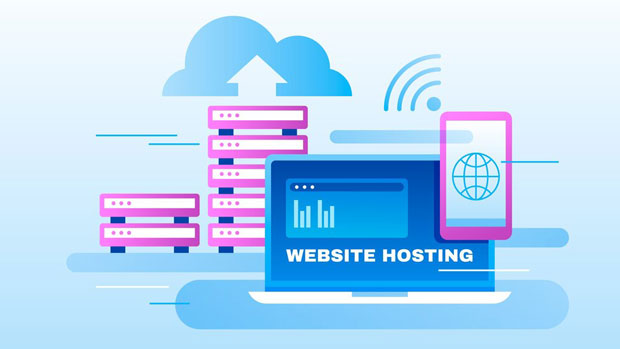In the world of web scraping, data mining, and digital marketing, proxy services play a crucial role in masking users' real IP addresses to ensure privacy and security. static proxies, which provide a fixed IP address for extended periods, are particularly valuable for these tasks. Among the various providers in the market, PYPROXY and StormProxies stand out as two popular choices for those seeking static proxies. The question often arises: which of these two services offers more stability when it comes to IP address reliability? In this article, we will dive into a detailed comparison of PyProxy and StormProxies, analyzing their performance, features, pricing, and customer experiences to determine which service provides the most stable IPs. Understanding Static ProxiesStatic proxies, unlike rotating proxies that frequently change IP addresses, provide a consistent IP that remains fixed for a longer period. This is essential for activities where maintaining a stable IP address is necessary to avoid IP bans, CAPTCHA challenges, and other interruptions.Static proxies are most commonly used for tasks like web scraping, SEO monitoring, account management, and even bypassing regional restrictions for accessing geo-blocked content. Their main advantage lies in their reliability and the ability to execute long-term tasks without triggering suspicion from websites. However, the stability of the IP can vary significantly across different proxy services. This is where comparing services like PyProxy and StormProxies becomes relevant.PyProxy: Features and PerformancePyProxy offers a range of services aimed at those looking for reliable and fast static IPs. Below are the key aspects to consider when evaluating PyProxy:1. IP Stability: PyProxy is known for providing highly stable static IPs. Once assigned, users can maintain the same IP address for a long period, making it ideal for tasks that require consistency. However, some users have reported occasional issues with IP rotation during specific peak periods. This can result in slight IP instability in high-demand situations.2. Speed and Latency: Speed is crucial when working with proxies, especially for tasks like web scraping. PyProxy generally offers fast connections with low latency, but its performance can be inconsistent, particularly during peak hours. It is essential to consider the network infrastructure and location of the data centers to ensure the best speed for your tasks.3. Pricing and Scalability: PyProxy’s pricing structure is competitive, and the service allows for scalability, making it suitable for both small-scale projects and larger, enterprise-level needs. However, the pricing may vary based on the number of IPs and bandwidth requirements, so it's important to assess your needs before committing to a plan.4. Customer Support and Reliability: PyProxy offers good customer support with timely responses to issues. However, some users have reported delays in resolving technical issues related to connectivity. This can affect the overall reliability of the service, especially when uptime is critical.StormProxies: Features and PerformanceStormProxies is another well-known provider in the static proxy market, offering dedicated and rotating proxy solutions. Let's look at the factors that influence its performance:1. IP Stability: StormProxies specializes in providing both static and rotating proxy options. When it comes to static proxies, their IPs are stable, but not always as long-lasting as PyProxy's. Some customers have mentioned that StormProxies' IPs occasionally change or are rotated in the background, which might cause some instability for users who require a fixed IP for extended periods.2. Speed and Latency: In terms of speed, StormProxies provides solid performance with decent latency rates. Its IP addresses are well-suited for moderate scraping tasks. However, it may not perform as well during high-volume tasks or in regions with less optimal data center connections, potentially affecting the user experience in specific use cases.3. Pricing and Scalability: StormProxies is relatively affordable compared to many other proxy services, and its plans are designed for scalability. The service caters to smaller businesses and individuals but also offers solutions for larger-scale operations. However, for users who require large numbers of static IPs or extensive bandwidth, the pricing can become higher.4. Customer Support and Reliability: StormProxies generally offers responsive customer support, but there have been occasional complaints about the quality of service during peak demand times. Like PyProxy, some users have reported that it can take time to resolve technical issues, which can cause downtime and impact IP stability.Comparison of IP Stability: PyProxy vs StormProxiesWhen comparing the IP stability of PyProxy and StormProxies, both services offer static IP options, but with some distinctions that could impact your decision:1. Consistency of IP Address: PyProxy tends to provide more consistent and reliable static IP addresses. Once an IP is assigned, it remains stable over time, making it better suited for long-term tasks. On the other hand, StormProxies may occasionally rotate or change IPs in the background, leading to slight instability, especially during high-traffic periods.2. Network Infrastructure and Data Centers: Both services utilize robust infrastructure, but PyProxy generally has a more optimized setup for maintaining static IPs. StormProxies, while offering stable connections, may not always maintain the same level of consistency as PyProxy in terms of IP persistence.3. User Experiences: Customer feedback highlights that PyProxy is generally favored for tasks that demand long-term IP stability. StormProxies, while offering competitive pricing, has received some mixed reviews regarding IP consistency, especially for users who need fixed IP addresses over extended periods.Which One Offers Better Stability for Your Needs?To determine which proxy provider is best for your specific use case, consider the following factors:1. For Long-Term, Consistent IP Needs: If your work requires a static IP address that stays the same for an extended period, PyProxy is likely the better option. Its IPs are generally more stable and less prone to change, making it ideal for activities like SEO monitoring, account management, and persistent web scraping tasks.2. For Cost-Effective, Moderate Use: If you're looking for an affordable solution for moderate tasks, StormProxies can be a good choice. However, if absolute IP stability is critical for your work, you may face occasional instability with their static proxies. For lighter tasks, StormProxies should suffice.3. For Scalability and Larger Projects: Both PyProxy and StormProxies offer scalable solutions. If you're running a larger operation, consider how many IPs you need and whether the price is justifiable. PyProxy offers more stability but might come at a higher price, whereas StormProxies offers cost-effective plans for smaller operations.Conclusion: PyProxy vs StormProxies – Which One Is More Reliable?When it comes to stability, PyProxy is generally the superior choice for users who require consistent, long-term static IPs. Its network infrastructure and customer service are designed to ensure higher reliability, making it the preferred option for users with demanding tasks.StormProxies, on the other hand, offers solid performance at a lower price point, but the occasional instability with IP addresses may be a drawback for those who need a steady IP for extended durations.Ultimately, the choice between PyProxy and StormProxies will depend on your specific needs, including budget, required IP stability, and the scale of your project. If stability is paramount, PyProxy is your best bet. However, if you’re working with a moderate budget and can tolerate occasional fluctuations in IP stability, StormProxies offers a reasonable alternative.
Oct 26, 2025


































































